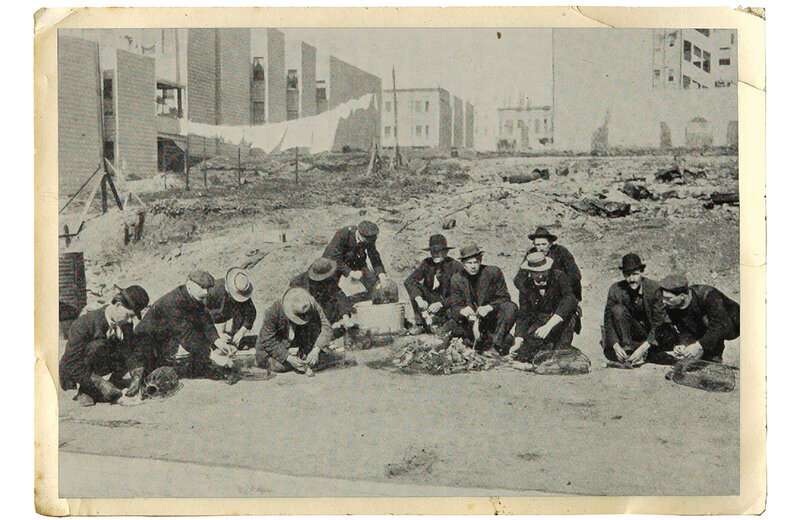Racism, regret and rat hunters: what history tells us about previous pandemics

To cope with COVID-19 pandemic fatigue, some are making sourdough starter from scratch while others binge TV shows from a growing number of streaming services. Dan Wallace found relief by researching the ways in which the United States has been terrorized by bio-organisms since the late 1800s.
"Understanding how humans have gone through things like this before, and that the world didn't end, was oddly comforting," said Wallace, a Ph.D. candidate in the History Department at the USC Dornsife College of Letters, Arts and Sciences.
Wallace and his academic adviser Bill Deverell, professor of history at USC Dornsife, recently published an article in the Journal of Alta Californiaabout their research findings, describing how six different plagues impacted life for people in Los Angeles and western states, dating back to 1880. It recounts the stories of children orphaned, neighborhoods demolished and bounties placed on rats.
Some of the parallels to today's pandemic strike a particularly resonant chord, particularly the responses by political leaders and the disproportionate ways in which people of color suffered—not just from the diseases, but from racism and xenophobia.
"Asian Americans are targeted for discrimination by people who blame them for the coronavirus," said Wallace. "During the cholera outbreak of 1880, the bubonic plague in the early 1900s and other outbreaks, it was Chinese people who were blamed. And just like today, there's a history of elected leaders downplaying the severity of public health crises for economic reasons."
Beginning In 1900, California Gov. Henry Gage, along with state and local business leaders, tried to minimize concerns about the bubonic plague, criticizing public health experts for being hysterical about a foreign disease. Misinformation quickly circulated, long before the advent of social media, that white people were somehow immune to the malady.
L.A. response to plague: fire and fury
Many may be surprised to learn that America's last major outbreak of the plague was in Los Angeles. It was 1924, and the first to die were Latinos who lived in a low-income neighborhood near the L.A. River. While public health officials cared for those experiencing symptoms and quarantined people in the affected neighborhood, some city leaders and local media tried to cover up the story to protect tourism and harbor businesses.
"No one has ever wanted the Black Death to make an appearance in their city," said Deverell, one of the leading historians of the American West, "but it's especially ironic when a medieval scourge shows up in the vaunted 'city of the future.'"
Because rodents can have fleas that carry the plague, L.A. promoted their extermination by placing a bounty on every dead rat. That incentivized teams of hunters, some with dogs and others with toxic chemicals, to travel through neighborhoods on rodent killing sprees. When even the hunting squads couldn't eradicate the disease, city leaders took more drastic action; they obliterated neighborhoods most affected—and some that weren't—by demolition and fire.
"The destruction of neighborhoods was brutal," said Deverell. "The housing stock was grim and unhealthy, yes. But where did those people go? I don't think any provision was made for them after the 'get out' orders were given."
Ripped from today's headlines?
Several years earlier, the Spanish flu, or H1N1 virus, had worked its way from the East Coast to California. In scenes that would be familiar today, residents of L.A. challenged new stay-at-home regulations, citing civil liberties and personal freedom. Well into the fall and winter months of 1918, as deaths mounted, people debated lockdown orders and the requirement to wear masks.
In another story that could be ripped from today's headlines, the historians tell the tragic tale of a 14-year-old Texas girl who defied her mom's strict quarantine. Bored out of her mind (no mobile phone, no Netflix, no TikTok!), Jennie O'Neal snuck out of her home one night to party with friends. Weeks later, her mother, died from the H1N1 virus and Jennie lived the rest of her life convinced that she was responsible.
Wallace and Deverell were motivated to conduct their research and share their findings not only to help people understand the context of the current pandemic, but to learn from previous plagues.
"It's critically important to see how the past can help us with contemporary issues," said Deverell. "We can't know the future, but we can have conversations with the past."
Provided by University of Southern California


















